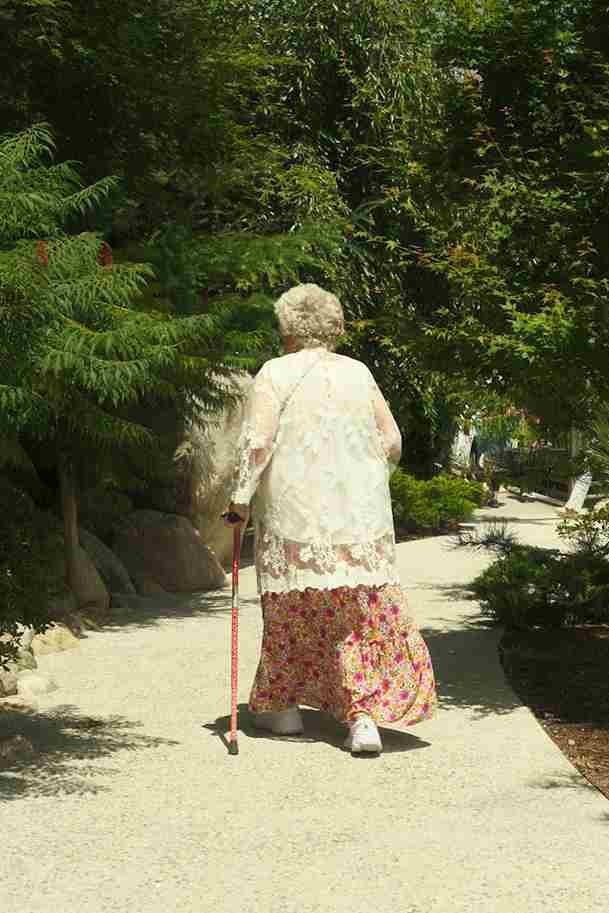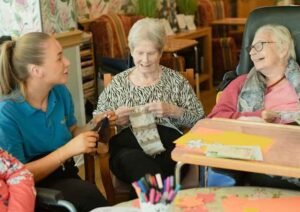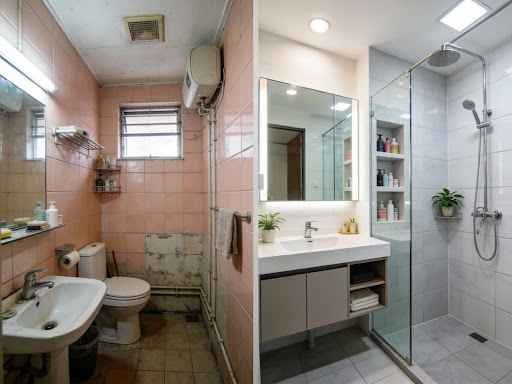Are you wondering when to move from assisted living to nursing home for your loved one? This is a question many families face as they navigate the changing needs of aging parents, spouses, or relatives. The decision can feel overwhelming and emotional, but understanding the signs and differences between care settings can help you make the best choice for your loved one’s safety, health, and happiness.
Assisted living communities and nursing homes both offer vital services for older adults, yet they serve distinct purposes. Assisted living is designed for seniors who value independence but need a bit of help with daily tasks. Nursing homes, on the other hand, provide constant medical supervision and skilled nursing care for those with more complex health needs.
Knowing when to move from assisted living to nursing home is crucial for ensuring the right level of care. The transition often comes with many questions: What changes signal it’s time to consider a move? How do you make such a significant decision? What should you expect during the process, and how can you support your loved one emotionally?
This comprehensive guide will walk you through everything you need to know, from understanding the differences between assisted living and nursing homes, to recognizing the warning signs, making the final decision, and easing the transition. With practical advice, expert insights, and clear explanations, you’ll feel more prepared and confident as you support your loved one through this important life stage.
Understanding Assisted Living vs. Nursing Home
Before deciding when to move from assisted living to nursing home, it’s important to understand the core differences between these two types of care.
What Is Assisted Living?
Assisted living communities offer a comfortable, supportive environment for seniors who can still manage most aspects of daily life but need some help. Residents typically live in private apartments or rooms and enjoy a social, home-like atmosphere. Services often include:
- Help with daily activities: Bathing, dressing, grooming, and medication reminders.
- Meals and housekeeping: Nutritious meals, laundry, and cleaning services.
- Social activities: Planned group events, outings, and recreational programs.
- 24/7 staff support: Assistance available around the clock, but not intensive medical care.
Assisted living is ideal for seniors who want to retain autonomy but benefit from a little extra support. Most residents are mobile and able to participate in community life, yet appreciate having help nearby.
What Is a Nursing Home?
Nursing homes, also known as skilled nursing facilities, provide much more comprehensive medical and personal care. They are designed for individuals with serious health conditions, limited mobility, or cognitive decline requiring constant supervision. Services include:
- Skilled nursing care: Registered nurses and licensed practical nurses on-site 24/7.
- Medical management: Administration of medications, wound care, IV therapy, and chronic disease management.
- Personal care: Bathing, toileting, feeding assistance, and mobility support.
- Rehabilitation services: Physical, occupational, and speech therapy.
- Memory care: Specialized units for residents with dementia or Alzheimer’s disease.
Nursing homes are typically best for those who can no longer live safely in an assisted living setting due to medical or cognitive needs.
Key Differences Between Assisted Living and Nursing Homes
- Level of care: Nursing homes provide constant medical attention; assisted living offers more independence and less medical intervention.
- Living environment: Assisted living feels more like a community or apartment complex; nursing homes are more clinical, focusing on health and safety.
- Cost: Nursing homes are generally more expensive due to the higher level of care and staffing.
Why Start in Assisted Living and Later Move?
Many seniors begin their journey in assisted living because it allows them to maintain independence. However, as health conditions progress, the need for more intensive medical care may arise, signaling it’s time to consider a nursing home.
Signs It’s Time to Consider Moving from Assisted Living to a Nursing Home
Recognizing when to move from assisted living to nursing home can be challenging. It’s a deeply personal choice, but certain signs suggest that the current level of care is no longer enough to keep your loved one safe and healthy.
Changes in Health and Medical Needs
One of the clearest indicators is a shift in medical requirements. Seniors who develop complex health issues may need skilled nursing care that assisted living simply can’t provide.
Increasing Medical Care Requirements
- Wound care: Chronic wounds, bedsores, or surgical recovery often require daily monitoring by a nurse.
- IV therapy: Some medications and treatments must be administered intravenously, which is outside the scope of most assisted living facilities.
- Dementia care: As cognitive decline progresses, seniors may require specialized memory care available only in certain nursing homes.
Frequent Hospitalizations or Chronic Condition Management
- Multiple hospital visits: If your loved one is being hospitalized frequently due to falls, infections, or worsening chronic illnesses, this could indicate that their needs exceed what assisted living can handle.
- Complex medication regimens: Seniors with heart disease, diabetes, or other chronic conditions may need professional oversight to manage their medication schedules safely.
Decline in Physical or Cognitive Abilities
Even with the support of assisted living staff, some seniors may lose the ability to manage daily tasks.
Alzheimer’s or Dementia Progression
- Memory loss: Wandering, confusion, and inability to recognize familiar faces or places point to advanced cognitive decline.
- Behavioral changes: Agitation, aggression, or paranoia can be challenging for assisted living staff to manage safely.
Difficulty Managing Activities of Daily Living (ADLs)
- Bathing, dressing, eating: If your loved one cannot perform these activities even with help, a nursing home may be needed.
- Mobility issues: Frequent falls, inability to transfer from bed to chair, or needing two-person assistance are red flags.
Safety Concerns
Safety is a top priority. When assisted living can no longer keep a resident safe, a move becomes necessary.
Increased Falls or Injuries
- Frequent accidents: Multiple falls or unexplained bruises signal that the environment is no longer safe.
- Wandering: Seniors with dementia may leave the premises unnoticed, putting them at risk.
Confusion or Disorientation
- Getting lost: Even within familiar surroundings, disorientation increases the risk of harm.
- Inappropriate behaviors: Attempting to cook unsupervised or handling dangerous objects.
Emotional and Social Factors
Health is more than physical. Emotional well-being and social engagement also matter.
Increased Isolation or Depression
- Withdrawal: If your loved one stops participating in activities or avoids social interaction, it may be due to declining health.
- Mood changes: Depression, anxiety, or apathy can be signs that more intensive support is needed.
Family and Healthcare Provider Recommendations
Listen to the advice of professionals who interact with your loved one regularly.
- Staff concerns: Assisted living staff may express that they can no longer meet your loved one’s needs safely.
- Doctor’s advice: Healthcare providers can assess whether a higher level of care is warranted.
If you recognize several of these signs, it may be time to discuss when to move from assisted living to nursing home with your family and care team.
How to Make the Decision: Practical Steps and Considerations
Making the transition from assisted living to nursing home is a significant decision. Here are practical steps and considerations to help ensure the process is thoughtful, compassionate, and informed.
Assessing Current Care Level vs. Needs
Begin with an honest evaluation of your loved one’s current abilities and medical needs.
- Needs assessment: Many assisted living and nursing home facilities offer free assessments to help you understand the level of care required.
- Activities of daily living (ADL) checklists: Use these to see where your loved one is struggling.
Consulting with Professionals and Family
- Healthcare professionals: Physicians, geriatric care managers, and social workers can provide objective recommendations based on medical history and current health.
- Assisted living staff: They can share observations about changes in behavior, health, or safety.
- Family meetings: Open, honest discussions among family members can help align goals and expectations.
Financial Implications
The cost of care is a major consideration.
- Assisted living vs. nursing home costs: Nursing homes are usually more expensive due to the level of medical care.
- Insurance and benefits: Medicare, Medicaid, long-term care insurance, and veterans’ benefits may help cover costs. Know what each covers and what out-of-pocket expenses to expect.
Visiting Nursing Homes and Comparing Care Options
Tour several nursing homes to find the best fit.
- Location and reputation: Choose a facility that is convenient for family visits and has positive reviews.
- Services offered: Make sure the nursing home can address your loved one’s specific needs, including memory care if necessary.
- Staff-to-resident ratio: Higher ratios often mean more personalized attention.
Preparing Emotionally for the Transition
This move is not just a logistical challenge—it’s an emotional journey.
- Acknowledge feelings: It’s normal for seniors and families to feel sadness, guilt, or anxiety.
- Seek support: Counseling or support groups can help everyone involved process the change.
- Involve your loved one: Whenever possible, include them in the decision-making to maintain their dignity and autonomy.
Taking these steps can make the process of deciding when to move from assisted living to nursing home less daunting and more collaborative.
What to Expect During the Transition
The transition from assisted living to nursing home is a significant life event. Understanding what to expect can help ease the process for both seniors and their families.
The Process of Transferring
- Notification and paperwork: Inform the assisted living community of your decision. Prepare any required documentation, such as medical records and advance directives.
- Health assessments: Most nursing homes require a pre-admission assessment to determine care needs and create a personalized care plan.
- Choosing a move date: Coordinate with both facilities to schedule the move for a smooth handoff.
Adjusting to a New Environment and Routine
- Settling in: Nursing homes may feel more clinical and structured than assisted living. Expect new routines around meals, medications, and daily activities.
- Personalization: Bring familiar items from home (photos, blankets, decorations) to make the new space feel welcoming.
Support Available During the Transition
- Care coordinators: Many facilities have transition specialists or social workers to guide families through the process.
- Family visits: Frequent visits during the first few weeks can help your loved one adjust.
- Staff introductions: Meet the care team and clarify any special needs or preferences.
Tips for Making the Move Smoother
- Prepare your loved one: Talk openly about the reasons for the move and what to expect.
- Stay positive: Focus on the benefits—access to better care, safety, and peace of mind.
- Encourage participation: Help your loved one get involved in activities or meet other residents.
A well-planned transition can minimize stress and help your loved one feel supported throughout the move from assisted living to nursing home.
Benefits of Moving to a Nursing Home When Needed
While the idea of moving from assisted living to a nursing home can be difficult, there are significant benefits when higher-level care becomes necessary.
Access to Higher-Level Medical and Personal Care
Nursing homes are equipped to manage complex health conditions and provide skilled nursing care around the clock.
- 24/7 medical monitoring: Immediate response to emergencies or changes in health.
- Regular physician visits: Doctors and specialists are often on staff or visit regularly.
Better Support for Complex Health Issues
- Chronic disease management: Comprehensive care plans for diabetes, heart disease, or respiratory illnesses.
- Medication administration: Trained staff ensure accurate and timely delivery of medications.
Specialized Dementia or Memory Care Units
- Tailored care: Facilities may have dedicated memory care wings with specially trained staff.
- Safety features: Secured areas prevent wandering and offer calming environments.
Enhancing Quality of Life
- Therapeutic activities: Physical therapy, occupational therapy, and recreational programs promote mobility and engagement.
- Nutritious meals and dietary support: Registered dietitians create menus that meet individual health needs.
- Social opportunities: Activities, events, and communal dining help combat loneliness.
Ultimately, moving to a nursing home at the right time can improve safety, health outcomes, and overall quality of life for seniors who need more intensive support.
Common Misconceptions About Moving to a Nursing Home
Many families hesitate to consider nursing homes due to persistent myths and misconceptions. Let’s address some of the most common misunderstandings.
Nursing Homes Are Not Just “Last Resorts”
- Proactive care: Nursing homes can be a proactive option for those who need specialized care—not just a place for the very end of life.
- Focus on rehabilitation: Many facilities offer short-term rehab and recovery services.
Quality and Variety of Care Options
- Modern facilities: Today’s nursing homes vary widely in size, amenities, and care specialties.
- Personalized care: Care plans are tailored to each resident’s unique needs and preferences.
Supporting Independence and Dignity
- Resident choice: Many nursing homes encourage residents to make choices about meals, activities, and daily routines.
- Respect for autonomy: Staff are trained to treat residents with dignity and support their independence as much as possible.
Addressing Stigma and Emotional Concerns
- Positive experiences: Many families find that their loved one thrives in a nursing home setting, gaining access to resources and social opportunities that weren’t available before.
- Emotional support: Facilities often provide counseling and support for both residents and families during the adjustment period.
Understanding the realities of nursing home care helps families make informed, compassionate decisions about when to move from assisted living to nursing home.
Resources and Support for Families Considering the Move
No family has to navigate this transition alone. There are many resources available to help you make informed choices and access the support you need.
Information Centers and Government Resources
- Eldercare Locator: A free service from the U.S. Administration on Aging that connects families to local resources.
- State and local agencies: Area Agencies on Aging (AAAs) can provide information on services, benefits, and care options.
Support Groups for Families
- Alzheimer’s Association: Offers local support groups for families coping with dementia and care transitions.
- Online forums: Websites and social media groups where families share experiences and advice.
Financial Aid and Insurance Guidance
- Medicaid and Medicare offices: Staff can explain eligibility and coverage for nursing home care.
- Long-term care insurance specialists: Help you understand your policy and benefits.
Professional Care Managers and Advisors
- Geriatric care managers: Certified professionals who help assess needs, coordinate care, and facilitate transitions.
- Social workers: Often available through hospitals or senior centers to guide families through the process.
Leveraging these resources can make the process of deciding when to move from assisted living to nursing home less overwhelming and more manageable.
Key Takeaways
- Recognizing when to move from assisted living to nursing home involves watching for changes in health, safety, and daily functioning.
- The transition is a major decision that should involve thorough assessments, family discussions, and professional input.
- Nursing homes provide higher-level care, safety, and quality of life for those with complex needs.
- Common myths about nursing homes can create unnecessary fear—modern facilities offer personalized, dignified care.
- Families have access to numerous resources and support groups to guide them through the transition process.
Conclusion
Choosing when to move from assisted living to nursing home is never easy, but understanding the key indicators can help families make the right decision at the right time. From increasing medical needs and safety concerns to emotional changes or professional recommendations, knowing what to look for ensures your loved one receives the care and support they deserve.
Timely decisions aren’t just about health—they’re about quality of life, dignity, and peace of mind for both seniors and their families. If you’re facing this decision, don’t hesitate to seek guidance from healthcare professionals, visit potential facilities, and tap into available resources.
Your proactive approach can make a meaningful difference. If you’re ready to discuss your options or need personalized advice, contact our team for a consultation and let us help you navigate this important transition with compassion and expertise.







